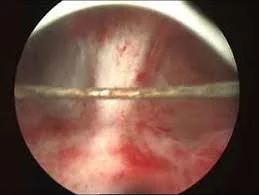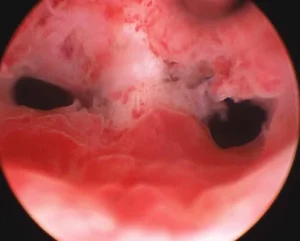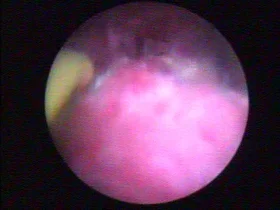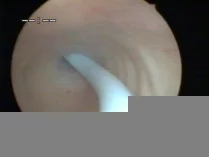Hystreroscopy
Hystreroscopic Spectectomy

Hys.septectomy: video: https://www.youtube.com/edit?o=U&video_id=Eti8MQgLQao
- Women who abort repeatedly sometimes have a partition in their uterine cavity. This is due to a fibrous tissue in the
- centre of the uterus, which divides the uterus into two halves. This may sometimes interfere with continuation of pregnancy.
- Diagnosis of the septum can be made with the help of an X-ray called hysterosalpingogram or with 3-D ultrasonography.
- Treatment of the septum is by hysteroscopic septal resection. An instrument called the hysteroscope is inserted into the uterus and the septum resected with instruments.
- Removing the septum can restore the woman’s ability to continue with pregnancy.
- Hysteroscopic septal resection can be done as a day care procedure and the patient can go home on the same day itself.
Hystreroscopic Polypectomy

Hysteroscopic polypectomy is done for women with endometrial polyps. endometrial polyps present with irregular or heavy bleeding.
This can be cured with the procedure called hysteroscopic polypectomy.
Presentation: Many times women have slight intermittent bleeding off and on during their monthly cycle. These are sometimes caused by small tag like growths in the uterus called polyps. These polyps may sometimes not be seen on routine ultrasonography.
An instrument called the hysteroscope is passed vaginally into the uterus under anaesthesia and the uterus visualised through a camera on a screen. These small polyps can be removed under vision with the help of special instruments Sometimes women may have heavy bleeding if the polyps are big. These polyps can be seen on ultrasonography. These polyps can be resected with the help of hysteroscope.Video on hysteroscopic polypectomy:
The patient is admitted in the morning and can be discharged in the evening after the procedure. There is no need to take rest from routine work after this procedure is over.
Hystreroscopic Myomectomy

Hysteroscopic myomectomy is a procedure done for patients with fibroids that protrude into the lumen of the uterus.
Fibroids that protrude into the uterus bleed heavily. It is best to remove them hysteroscopically. This is called hysteroscopic myomectomy. Hysteroscope is an instrument shaped like the laparoscope. It is a tubular scope with a camera attached at one end. It is introduced into the uterus via the vagina. The fibroids protruding into the uterus like in the picture below are removed using cautery.
There are no incisions anywhere on the body and the patient can start working almost immediately. This procedure is reserved for only small fibroids protruding into the uterine cavity.
It is a very good alternative to hysterectomy for patients with heavy menstrual bleeding, as recovery after hysteroscopic myomectomy is very much faster that hysterectomy. Side effects are also less for hysteroscopic myomectomy. The patient is admitted in the morning and discharged in the evening
After effects: For large fibroids, sometimes, the period immediately after the procedure may be heavy. It will regulariseby itself and need not cause any worry. Sometimes there may be watery discharge after the procedure. This will settle gradually without much intervention.
Hystreroscopic Cannulation

Hysteroscopic cannulation is a procedure done to remove blocks in the tubes in inner end of the tube, where it opens into the uterus

In case of blocks in the tubal opening into the uterus, a cannula is passed into the opening to remove the block after viewing it through the hysteroscope. In infertile patients, hysteroscopic cannulation is often combined with laparoscopy.
